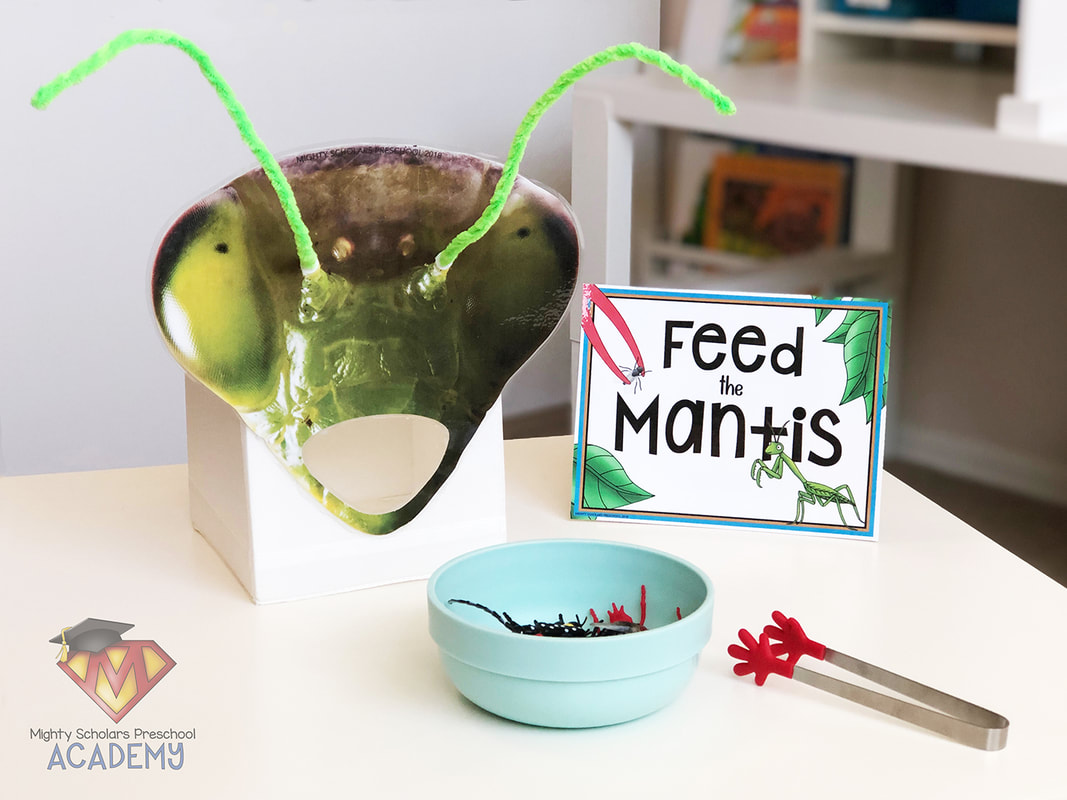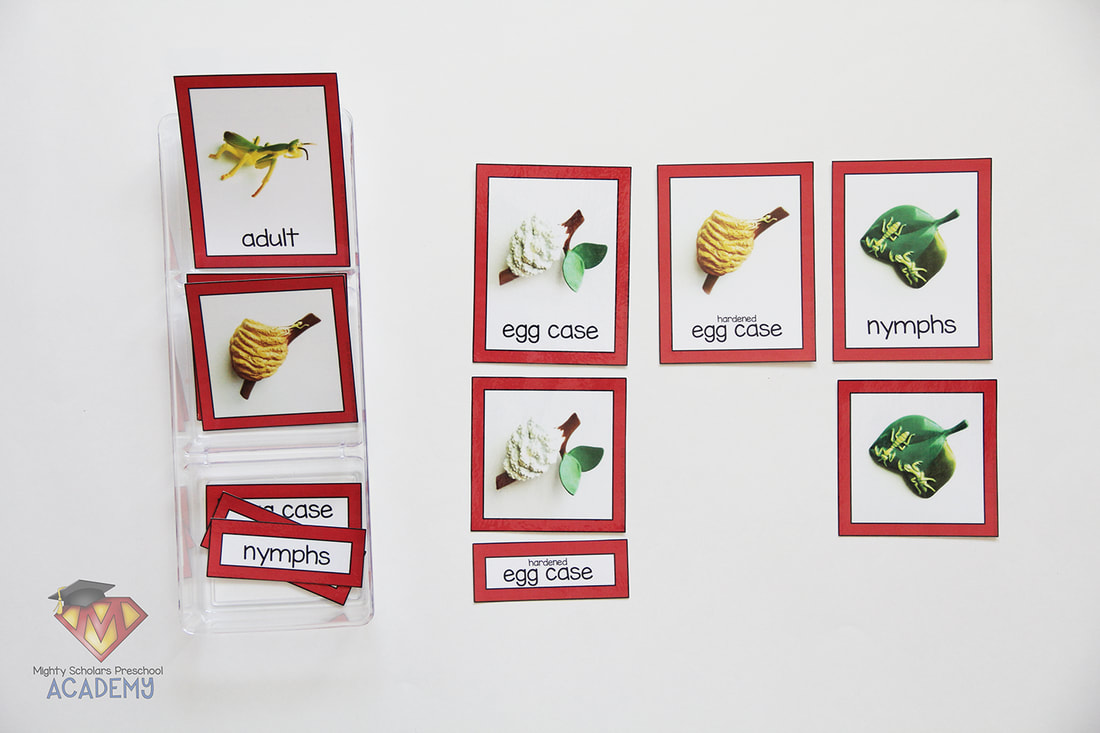|
Praying Mantises have always been a favorite to watch the entire life cycle of.
As a child, my brother and I had "pet" Praying Mantises. When his laid an ootheca and passed away, my brother was devastated and decided to care for the ootheca until the nymphs hatched. It was carefully placed in a jar, with cut nylons as the breathable barrier at the top. Each day (possibly several times), he'd carefully open the jar and take out the ootheca to check for emerging life. It seemed like forever to us as children. One Sunday, we were sitting in church and someone noticed something small moving from out of my brothers shirt pocket. Upon further observation, there were several itty-bitty mantis nymphs, climbing among the folds of his clothes. You can imagine the urgency my parents felt, as they realized the ootheca must have hatched without the nylon barrier in place. After rushing home and entering my brother's bedroom, his airplane wallpaper seemed to be moving as the hundred-plus nymphs moved about the walls. Days later, nymphs could still be found, captured and released outside. It's a vivid memory that our entire family brings up from time-to-time. As an adult, I have always tried to share similar experiences with my students and my own child.
Mantises are an alien looking insect, with incredible ability.
When giving lessons on mantises, I like to show real photographs. Since there are over 2,000 different types of mantises around the world, I like to show some of the most striking: Leaf Mantis, Flower Mantis, and Stick Mantis, to name a few. The unique look of mantises can make them look menacing. However, they are incredible hunters of destructive bugs and are an exciting pet to keep in the classroom.
Mantises are carnivores and will only consume living, moving creatures.
One of the activities in the science center, during our lessons on mantises is 'Feed the Mantis'. Plastic bugs (from the dollar store) are fed through the "mouth" of the mantis via tongs or tweezers. I like to add a foam die for my scholars to roll and count out the amount of bugs they should feed the mantis. It's a great way to include math and fine-motor work into the lessons. I've laminated the mantis head, cut out the mouth and poked twisted pipecleaners into the antennae locations to add a 3D feel. The head can be attached to a box, with an open top (to easily reach in and remove the plastic insects).
Three-part cards can be easily differentiated for students.
Montessori three-part cards are a great way to add matching and letter recognition. They are self-correcting and can also be used for other activities or small group work. I also use the praying mantis life cycle figures for younger students to match to the cards.
If you're lucky to have the mantis ootheca hatch during class, the experience is one of a lifetime.
Ootheca are unpredictable and can't necessarily be timed like many other life cycle creatures or animals. However, the opportinity to see the actual hatching of mantis nymphs is incredible. They wriggle their way out from the center seam of the ootheca, pale and similar in appearance to worms. Once they've emerged and are hanging on by the silken thread, their legs pop open and they can drop to walk or climb up. When their outer skin and exoskeleton has hardened, it becomes dark. They are delicate and need to have immediate access to plenty of live food, so releasing them immediately is important. I do keep a few in a little habitat, until all of my scholars have had the opportunity to observe them. Then, I usually only keep one or two in separate habitats. We have one from this year's hatch, named "Chuck Mantis". If you do plan on keeping a mantis, look forward to my blog post after our unit and millipede care.
The habitat's that are mesh, don't always have small enough holes, nor do they hold in the moisture needed to have the nymphs hatch from the ootheca. I always suggest keeping them in a jar, with a piece of cut nylons securly rubber-banded over the top. Lightly mist the inside of the jar, through the nylon, at least once a week. Since we are located in Arizona, I lightly mist three times a week. Your scholars can observe what they see on an observation page. If they aren't able to see the nymphs hatch, have them draw and write how they predict it will look.
There are only a few children's books on mantises.
I'm always on the lookout for good children's books on mantises. If you know of any, send me an email. I'd love to add them to my science library. The two I have pictured are: 'My Awesome Summer by P. Mantis' by Paul Meisel and 'Praying Mantises' by Lisa J. Amstutz.
Click on the image below to be taken to my Insects: Praying Mantis Life Cycles Science Pack:
Please note, as a participant in the Amazon Services LLC Associates Program, I may earn a small commission on qualified recommended links.
The Amazon Services LLC Assocites Program is an affiliate advertising program designed to provide a means for sites to earn advertising fees by advertising and linking to Amazon.com
My Amazon Picks for the lesson on Praying Mantises are:
Comments are closed.
|
Categories
All
©2012–2024 Mighty Scholars Preschool Academy
|










